How to properly clean the toilet?
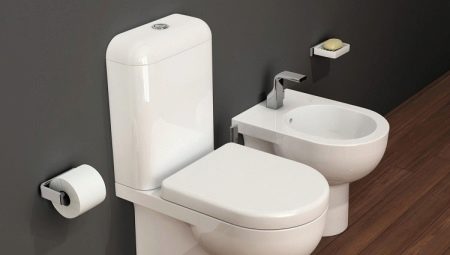
The sparkling bathroom and toilet are indicative of the cleanliness of the owners. But, unfortunately, it is not always possible to boast of shiny plumbing, and the reason for this can be a variety of circumstances. Someone simply does not clean, and someone is unable to cope with complex pollution. In our article, we will talk in detail about how to properly clean the toilet, what modern and folk remedies can be used to remove the most difficult dirt.
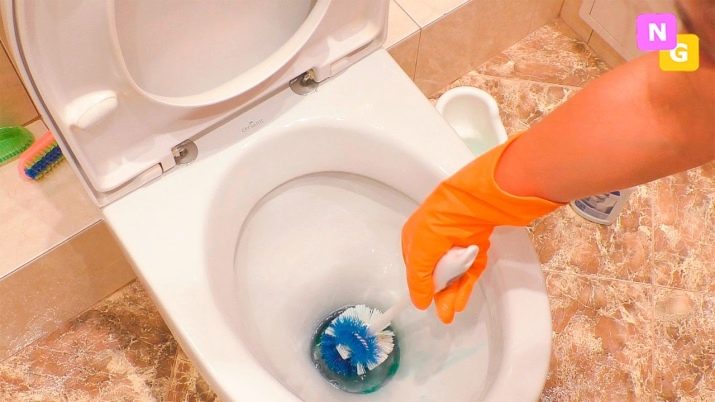
Ready-to-use toilet fluids
Nowadays, cleaning agents can clean almost any kind of dirt from the toilet. In addition, they help fight odor and prevent the growth of various microorganisms that are harmful to human health. Typically, these products come in the form of a cream or gel. In their composition, they most often contain substances such as hydrochloric and phosphoric acid, oxalic acid, as well as alkali and chlorine (other acids and aromatic fragrances may be added). These ingredients help fight the following problems:
- limescale, which provokes the deposition of urinary calculus - pollution appears as a result of the deposition of salt contained in water and urine;
- rust is also a consequence of poor water quality, a dirty and faulty drain tank;
- surface pollution from waste products;
- unpleasant odor and bacteria - are the result of the listed problems.
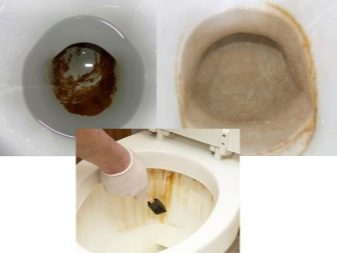
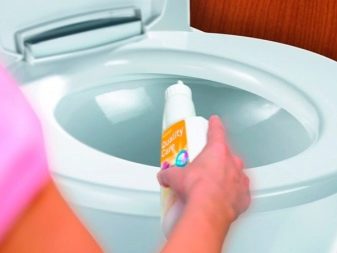
Consider the most popular liquids that will help you quickly clean the toilet from these types of contaminants:
- Domestos 100% - a gel that contains hydrochloric acid. Helps remove rust and urinary calculus.The average cost is 180 rubles. Customer reviews indicate that the tool does an excellent job of its task. Of the minuses, it is noted that the limescale is practically not removed and there is a very pungent odor.
- Comet "7 days of cleanliness" - gel with sulfuric acid. When working with it, it is imperative to observe safety measures! Helps to clean the toilet of all types of dirt, including fighting limescale. The average price is from 150 rubles. Consumers speak of this tool as the most effective and economical. Among the minuses, they indicate a too pungent smell.
- Sarma 7in 1 - means in the form of a gel, contains oxalic acid. Effectively cleans all types of dirt, including yellow plaque. The average price is about 100 rubles. Buyers are satisfied with the result, as well as the price-performance ratio. In addition, most note that the product has a pleasant lemon scent, which keeps freshness in the apartment for a long time.
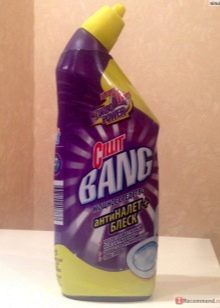
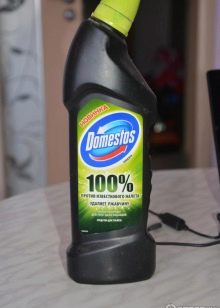
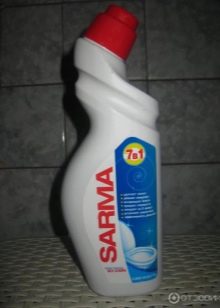
- Cilit - gel with hydrochloric acid. When working with it, it is imperative to observe safety measures! The gel removes all types of dirt in a matter of minutes, saves from limescale and rust. Average price - from 280 rubles. Buyers refer to this tool as the most effective. When you use it, the toilet becomes more shiny, the result is preserved for a long time.
- Sanfor universal - a product containing chlorine. Helps to whiten the toilet, fights mold, dissolves grease, disinfects perfectly. The average price is from 80 rubles. Buyers note that this is a good product that can be used not only for the toilet, but also for cleaning the bathtub and floor. Among the minuses, they highlight the fact that the gel does not cope well with limescale and rust, and also smells unpleasantly of bleach.
Some housewives clean the toilet "White". As you know, this product has a pronounced bleach smell, but it perfectly helps to cope with old dirt, limestone, rust, kills germs and whitens the surface.
To achieve an effective result, it is necessary to pour one liter of "Whiteness" into the toilet at night. In the morning, use a brush to clean the walls and rim of the toilet bowl, then rinse well with plenty of water.
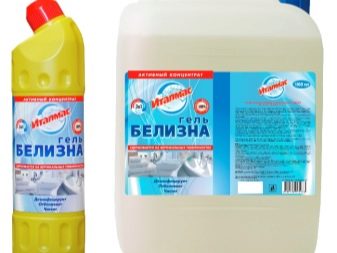
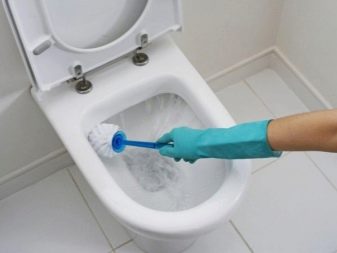
Folk remedies
But it is not only the commercially available liquid that is able to cope with the pollution in the toilet. There are several effective folk remedies that cost a penny, and the result from using them will simply surprise you.
You can get rid of rust and limescale baking soda and vinegar. To do this, it is necessary to liberally apply soda to the surface of the toilet bowl, leave it for a longer exposure for thirty minutes. Then pour about 50-100 grams of vinegar on top, after which an abundant foam forms, which must be intensively brushed off with a brush or brush, then washed with water.
Many people clean the toilet bowl surface electrolyte for batteries. It may seem strange to you, but this agent is an acid that can fight plaque and rust. To do this, apply the electrolyte to the surface, wait about a quarter of an hour and rinse with plenty of water using a brush.
Remember that this is a very corrosive liquid, therefore safety precautions must be taken when working with it. Please note that the electrolyte is not suitable for plastic pipes.
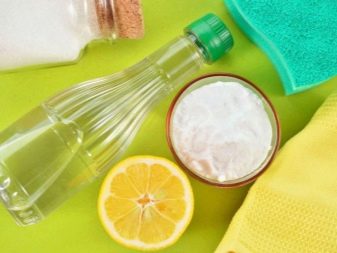
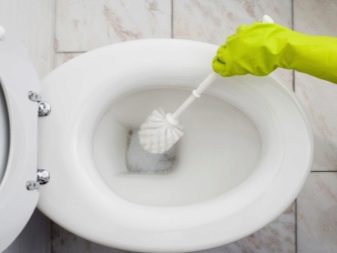
Everyone has long known that a popular drink Coca-Cola able to remove the most stubborn stains. This is due to the fact that soda contains citric acid, which is able to quickly cope with deposits. To do this, pour one and a half to two liters of drink into the toilet, wait about 20 minutes, rub the surface with a brush or a brush and rinse abundantly with water.
You can also cleanse various deposits using of hydrochloric acid... This is one of the most effective but dangerous remedies.Therefore, always observe safety precautions when working! The acid is applied to the surface for literally 3 minutes, after which it is thoroughly washed off with plenty of water. Do not leave the product on for longer, as the enamel of the toilet can be damaged.
Wipe off plaque and get rid of rust possible citric acid. To do this, 2-3 sachets are distributed over the surface of the toilet bowl, left for two hours, after which the contaminated areas are wiped with a brush and washed off abundantly with water.
When using these methods, be sure to pay attention to the area within the rim and to the "bed" of the water flow. They must be cleaned to remove possible mold, germs and traces of rust. By cleaning it more thoroughly, you will be able to keep the toilet fresher for a longer time.
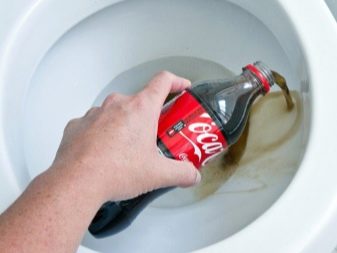
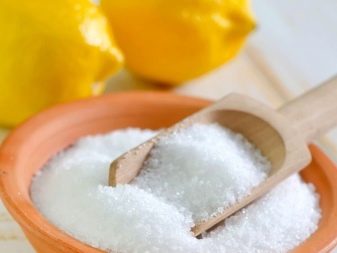
We clean the surfaces
Of course, when cleaning the toilet, you should pay attention not only to its condition, but also to the surfaces in the toilet room. They need to be in perfect condition to make the restroom enjoyable. First of all, it is a toilet seat. Very often traces and spots remain on it, which are later difficult to remove. Perfectly each family member should clean up immediately after themselves. Unfortunately, this is not always the case, in addition, in families, for example, there are children who often do not pay attention to pollution.
A damp cloth and concentrated dishwashing liquid. Wipe the seat well and rinse with plenty of water. Vinegar can help remove stubborn stains. Soak a cotton pad with it and wipe the surface thoroughly. Leave on for a longer exposure for 5-10 minutes, then rinse the seat pad with copious amounts of water. Also try using baking soda. It is necessary to apply it with a damp sponge on the surface and intensively rub the contaminated areas, then rinse thoroughly with water.

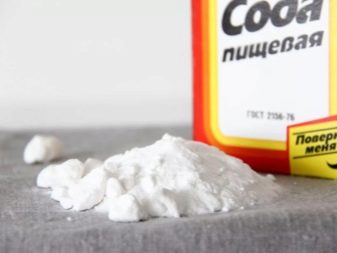
Very often the seat cover turns yellow. This is due, for example, to poor-quality material or simply burnout from a long time of use. Gel will help clear the lid from yellowness. Domestos. This method has been tried by many housewives, and each of them notes a really good result. When using it, it is necessary to apply the agent to the lid and leave to act for about a quarter of an hour. Then rub the soiled areas thoroughly with a brush and rinse with plenty of water.
Often, smudges remain under the rim of the toilet, which can be cleaned using liquid products or the folk methods that we described above. Only when cleaning should special attention be paid to these places. You can additionally use old toothbrushes - their small heads penetrate better into hard-to-reach places than, for example, a brush. You can also wipe off smudges with baking soda or soft powders such as Pemolux, Comet or Bref. They do not contain abrasive substances, so they will not scratch the surface of the toilet, but they will quickly and effectively deal with unpleasant stains.

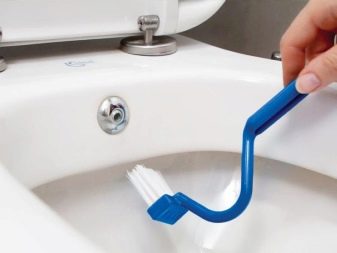
There are two other things to keep in mind when cleaning the toilet - flush and cistern lid. Dust often accumulates on them, microbes appear from rare washing. All you need to clean is a damp cloth. For more intense stains, use powders and liquid detergents.
How to wash the cistern?
The inside of the cistern can also be very dirty. It gets covered with rust or limescale. This pollution is directly related to the quality of the water. The old tank needs to be cleaned more intensively, as often it contains heavily ingrained dirt, which is very difficult to wash even in one or two times.
Before proceeding with direct cleaning, it is necessary to drain the water from the tank and shut it off in such a way that it does not fill up for some time.For thorough cleaning, you can remove the float and siphon and wash them in soapy water to remove rust and deposits. To clean the inside of the tank, you can pour about four liters of hot water into it by adding 50 grams of any washing powder... Leave this liquid for a long-term effect for about 20-30 minutes. Then the water must be drained.

For stubborn stains, use gentle cleaning powders Pemolux, Comet or Bref... They must be applied to the surface and rubbed well with a brush. You can also use any liquid products that we wrote about above. Best of all, gels help. Cilit and Sarma... These products should be applied to dirt, left for 15-20 minutes and thoroughly cleaned with a brush. Then fill the tank with water and drain it in the usual way.
For the prevention of plaque and rust, special tablets can be purchased. They are placed at the bottom of the tank and remain there for a long time until they are completely dissolved. These products help to fight not only lime and rust, but also disinfect the toilet bowl.
Such tablets can be of different colors (blue, green, pink), they have pleasant aromas, therefore the feeling of cleanliness will remain in the toilet room for a long time.
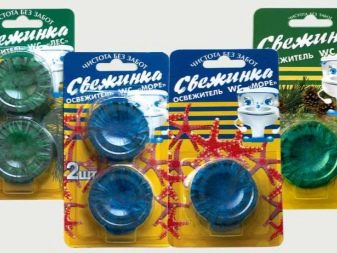
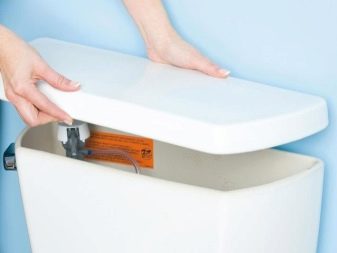
Getting rid of the blockage
During the operation of plumbing equipment, clogging of the toilet bowl can occur, which in itself is an extremely unpleasant situation and can lead to further flooding of neighbors. You can get rid of such a problem at home, but if something doesn't work out for you, better contact the professionals.
One of the most common ways to deal with blockages is to use plunger... It must be installed in the place where the water is drained, then you need to make progressive movements up and down until the problem is eliminated. This method can be used for simple dirt, when, for example, water does not go well. In more difficult cases, you will have to use a plumbing metal cable. To get rid of deposits in the toilet knee and pipe, you need to insert the cable into the drain hole and move it back and forth. This will clear the blockage and remove the blockage. In difficult cases, you will have to insert the cable several times and remove contamination in stages.
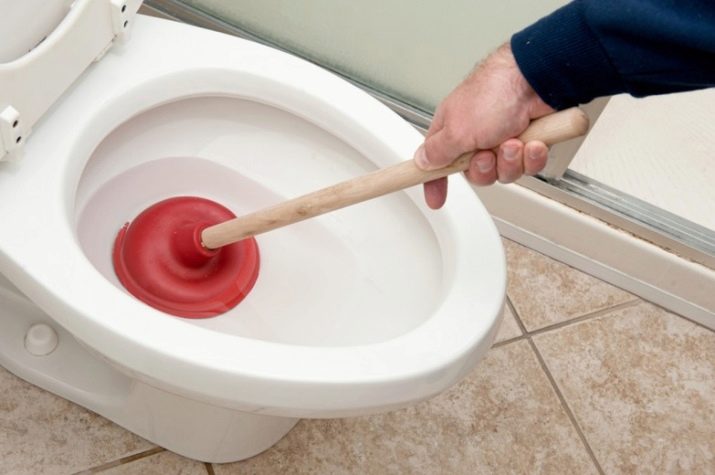
If you don't have a plunger, you can use a regular plastic bottle. This method is very popular among housewives. You will need a 2 liter bottle. She needs to cut off the bottom and install this structure in the drain hole. Then press just below the neck of the bottle several times to push the blockage through.
Of the disadvantages of this method, it is worth noting the presence of a very large amount of splashes. Therefore, lay down rags and napkins in advance to fix the problem immediately.
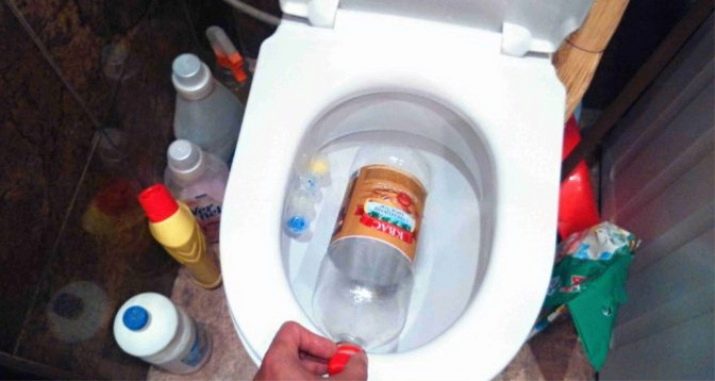
Often the cause of a blockage in the toilet is the ingress of various objects into it, for example, paper towels, children's toys, etc. wearing household gloves, pull out the blockage with your hands.
In this case, you need to be careful, since it is very easy for a hand to get stuck in the neck of the toilet bowl, and this problem will already be much more difficult to cope with.
Also, to eliminate the blockage, you can use special fluids that are produced specifically for these purposes. For example, gel Tiret, Sanfor and Domestos do an excellent job with such tasks. To do this, the liquid is poured into the toilet, left for 15-20 minutes, and then thoroughly washed off with hot water. Then you need to thoroughly wash the toilet in order not only to get rid of dirt, but also to disinfect the surface. Using this method, you need to take precautions, since liquids contain corrosive acids that can leave a burn on the skin.
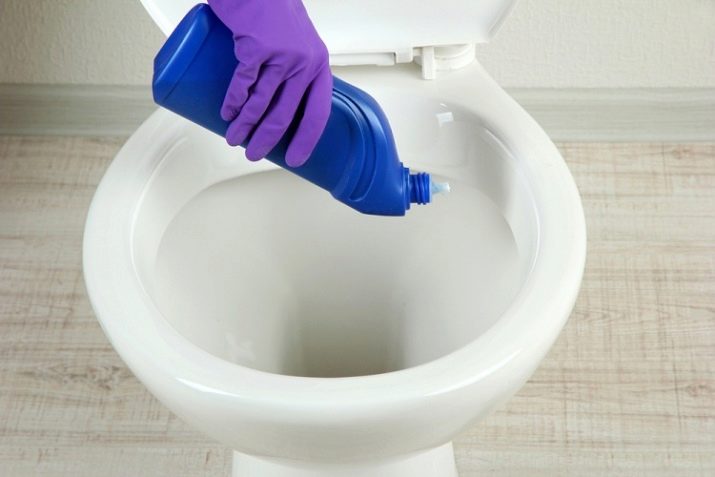
Useful Tips
To make cleaning the toilet a breeze, you need to do preventive cleanings once or twice a week. To do this, select the correct cleaning fluids and powders needed to correct specific problems. Remember a number of rules so that plumbing is always pleasing to the eye:
- make sure that the water from the tank does not leak (this will reduce the formation of plaque and rust on the surface);
- Do not throw food leftovers into the toilet that could clog;
- use a bowl brush regularly;
- do not forget to clean the surfaces of the plumbing and make preventive cleaning inside the tank.
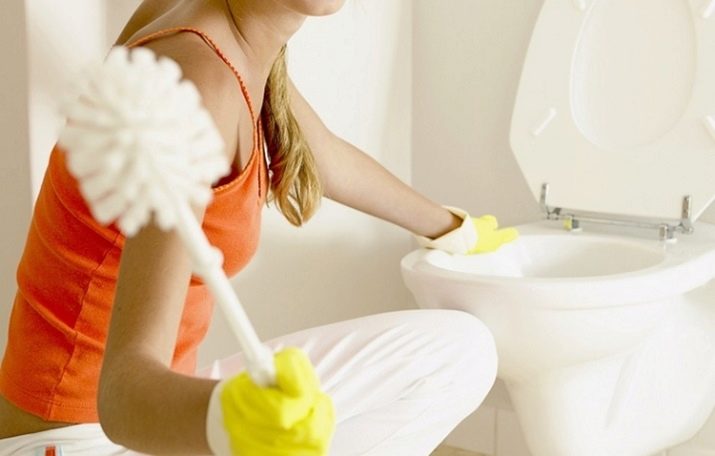
It is better to keep it clean all the time than to reuse powerful liquids to get rid of dirt, waste your time and mood.
For information on how to clean the toilet from plaque and rust, see the next video.








